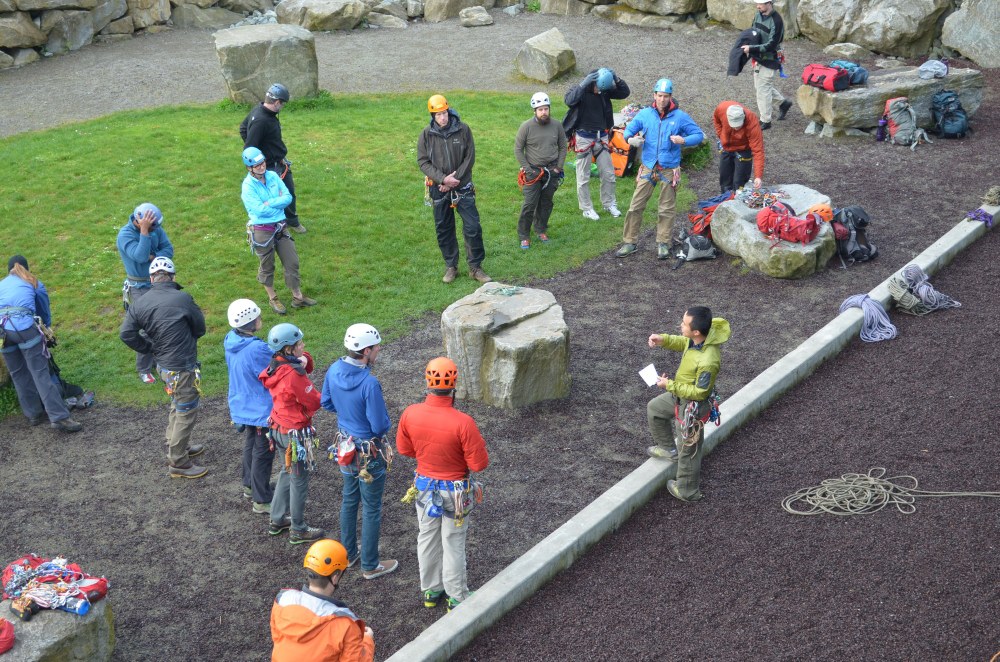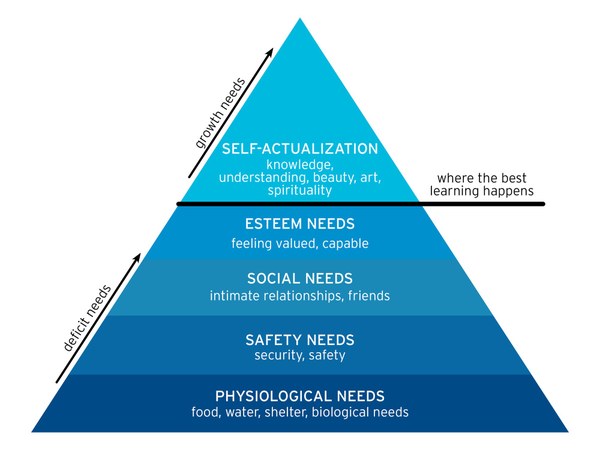
Volunteer-led outdoor education is the heart and soul of The Mountaineers. Our instructors are passionate about sharing their love of the outdoors with others, and many of our students choose to play an important role in our community as volunteer instructors after graduation.
While content, expertise, and a spirit of generosity go a long way towards providing a great experience for both students and instructors, we have the opportunity to address some foundational principles to set everyone up for success:
A difference in approach
When I signed up for the Basic Climbing Course nearly a decade ago, I wasn’t sure what to expect. I was new to the Pacific Northwest and generally overwhelmed. Fortunately, my misgivings were quickly put at ease. A couple of weeks before the course started, I received a welcome email with directions and a general idea of what to expect. When I arrived, I followed signs to the correct room where I was greeted by a volunteer who had me create a name tag and told me which table I was assigned to. There, I found a seat with a handbook and a practice rope waiting for me, and on the table were a few icebreaker questions that helped start conversation with the folks next to me. My anxiety dissipated, and I felt like I belonged. I was excited to start learning.
Many years prior, I had a much different experience at a ropes course facilitator training hosted by a military academy in Vermont. My colleague and I drove up for the training from Connecticut, and being unfamiliar with the area we got lost on campus and had to ask for directions. When we finally found the gymnasium, we walked in to find 10 students dressed in uniform. We were clearly the two “outsiders” and I was the only woman. As the majority of the students knew each other and their way around, there were no nametags, and my colleague and I had to ask for simple information. I also had no idea what the plan was for the day. I found myself focusing on whether I was prepared rather than on the course itself.
Some basic psychology
Anyone who’s taken an introductory psychology class may remember learning about a psychologist by the name of Abraham Maslow. In the 1950s he proposed a hierarchy of human needs, which is usually depicted as a pyramid.
The basic premise is that each level of need must be met before the next level can receive focus. So if people have unmet physiological needs – perhaps they’re hungry – they can’t focus on security or on making friends. Think about a potential situation in the outdoors: you’ve found yourself in an argument with a friend while out on a hike, a stressor on your social needs. You’ll likely focus on that until a grizzly bear crosses your path. Suddenly, you and the friend will abandon your argument and focus on getting out of there unscathed by the bear. Your safety needs will immediately surpass your social needs.
Let's think about this in the context of outdoor education. Students enroll in outdoor courses to learn skills, find community, and access beautiful places. All of these are high-level objectives in comparison to basic needs like food, water, shelter, and safety. Some have suggested that the bottom four tiers – physical needs, safety needs, social needs, and esteem needs – are “deficit needs,” meaning that they hold our focus until they are sufficiently met. On the other hand, all of the needs that fall within “self-actualization” – knowledge, understanding, beauty, spirituality – are “growth needs.” This means that the more these needs are met, the more we seek them out. It’s in this zone that our students can do their best learning. They’ve fulfilled their deficit needs and can put their full attention towards learning, growing, and being an asset to a team.
The leaders of my Basic Climbing Course had taken very intentional steps to make sure my basic needs were met so that I could focus on learning. Signs gave me a sense of security. The greeter, assigned seating, and icebreaker questions helped me feel like I was in the right place – like I belonged in this community. And the handbook answered logistical questions I had and got me excited to learn. On the other hand, the ropes course facilitator training lacked most of those key components. Rather than focusing on learning, my mind was filled with anxiety about some of my basic needs and how they would be met.
Implications for educators and fostering future volunteers
It's interesting to think about where we are as instructors and where our students are at any given point in time. For example, if we’re teaching a course for the fourth time, we know the routine. We’ve got our clothing and food systems dialed, we know at least half of the other instructors, and we’re confident in our abilities. We’re ready to show up and teach in pursuit of our own personal growth needs as volunteers.
It’s very easy to take those things for granted. When we don’t communicate with students about what to expect or how to prepare, or when we don’t facilitate introductions to start to build community, we are forcing our students into the lower levels of deficit needs. This isn’t their fault – it's not that they just “haven’t gotten there yet” – we’ve put them into that position. They signed up because they were motivated to fill some higher-level needs with our course, but when we fail to provide the right structure, we force their attention away from learning.
As a volunteer-led organization, we rely on those students who are driven to come back and donate their time and energy. Individuals who return time and time again are often the ones who had fulfilling experiences as students; whose growth needs were met – and continue to be met – by our organization. The small details we put into our programming have a substantial cumulative impact that should be taken into careful consideration. They piece together what it means to be an effective outdoor leader, and what it means to be a part of The Mountaineers. By doing everything we can to support both our students’ and instructors’ focus on higher-level needs, we not only support student learning and course objectives, we cultivate a vibrant and inspired community of volunteers.
QUICK TIPS TO SET YOUR STUDENTS UP FOR SUCCESS
Here’s an easy checklist of steps to help facilitate a positive learning environment:
- Communicate information in advance about food, supplies, clothing, and location
- Be prepared to change the location or reschedule if the weather will make it difficult for students to manage their basic needs
- Provide snacks and coffee
- Incorporate scheduled breaks, and communicate when they will be in advance
- Help students understand their safety equipment
- Take the time to set out supplies in advance
- Provide name tags (or name tents if students will be mostly sitting at tables)
- Facilitate introductions
- Pre-assign groups
- Find out what concerns your students have and address them in real time
- Let students know that they add value to the class
This article originally appeared in our Winter 2021 issue of Mountaineer Magazine. To view the original article in magazine form and read more stories from our publication, visit our magazine archive.
 Becca Polglase
Becca Polglase
